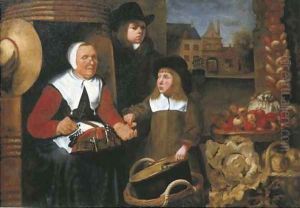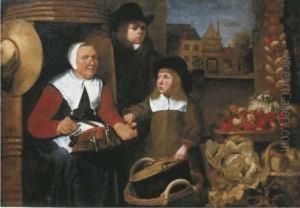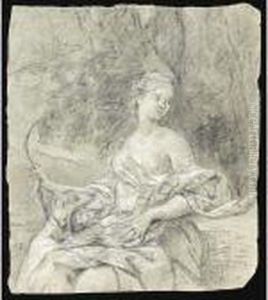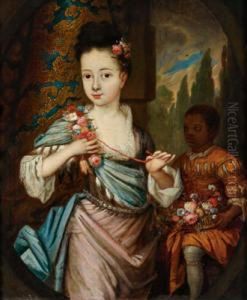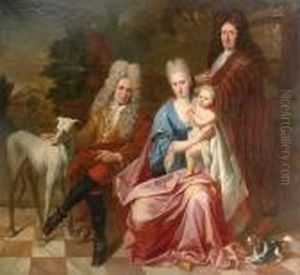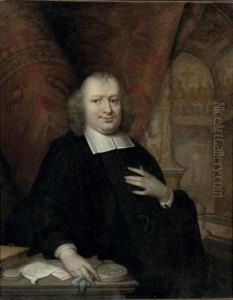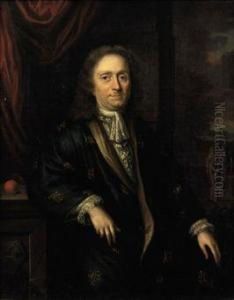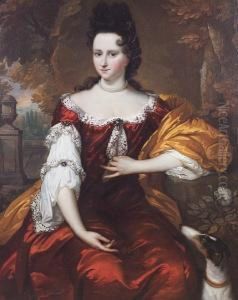Johannes Vollevens I Paintings
Johannes Vollevens I was a Dutch Golden Age painter born in The Hague in 1649. He is primarily known for his portrait paintings, although there is not an extensive amount of information regarding his life and career when compared to some of his contemporaries. Vollevens was a product of an era that is widely recognized for its significant contributions to the arts, particularly in the Netherlands, which was a thriving hub for painters during the 17th century.
Vollevens was the son of a jeweler, and he showed an affinity for art at a young age. He likely received his artistic training in The Hague, which was a common practice at the time for young aspiring artists to apprentice under established painters. The details of his training, however, are not well documented. His style suggests that he was influenced by the works of fellow Dutch artists, such as Thomas de Keyser and Bartholomeus van der Helst, known for their portraiture.
During his career, Vollevens became a member of the artist's guild in The Hague, which was an important step for any professional painter of the time. He married in 1673 and had children, some of whom also became painters, following in their father's footsteps. His family's involvement in painting helped to establish a small dynasty of artists carrying the Vollevens name, including his son, Johannes Vollevens II, who was also a portraitist.
Throughout his life, Johannes Vollevens I developed a modest but respected body of work, mostly consisting of portraits. His portraits often depicted the middle-class citizens and local dignitaries of The Hague, showcasing his ability to capture the likenesses and personalities of his subjects with skill and sensitivity. His work was characterized by a clear and steady hand, attention to detail, and an understanding of light and shadow, all of which were hallmarks of the Dutch portrait tradition at the time.
Vollevens' legacy is not marked by any major shifts in the artistic movements of the period, but he remains a notable figure within the context of Dutch portraiture. His works have occasionally surfaced in art auctions and are held in private and museum collections, contributing to our understanding of the period's social and cultural history through the faces he immortalized on canvas. Johannes Vollevens I passed away in 1728, leaving behind a legacy within the Dutch Golden Age that, while not as prominent as some of his peers, continues to be appreciated by art historians and collectors.
